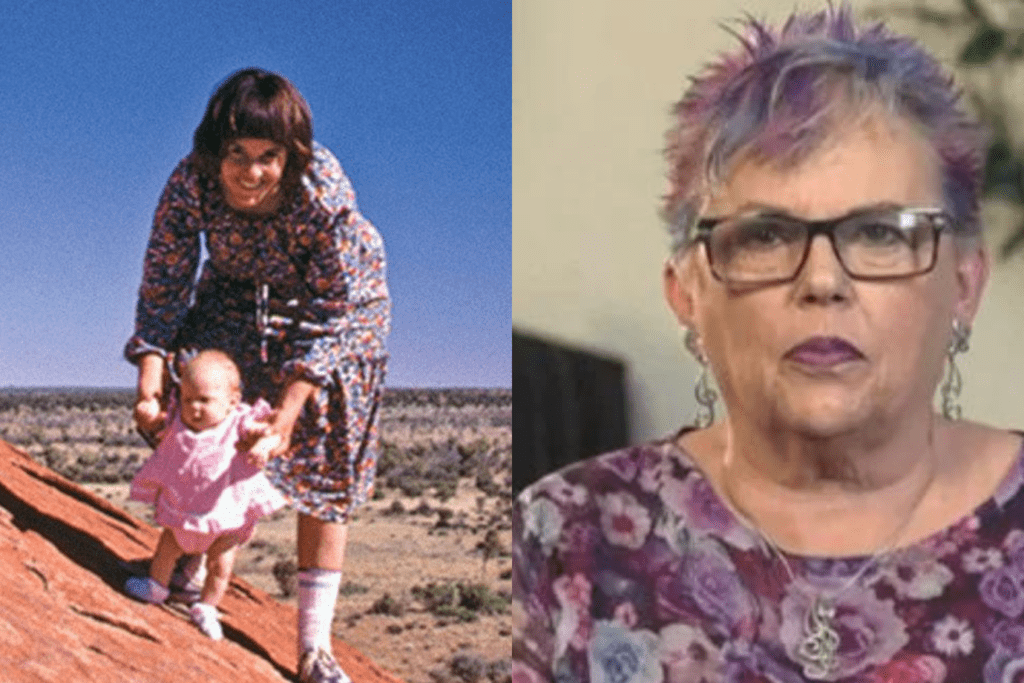Today marks 40 years since newborn Azaria Chamberlain was taken in the dead of night by a dingo at Uluru. It also marks 40 years since Lindy Chamberlain (Azaria’s mother) spiralled into a never-ending nightmare.
There’s not a person in Australia who doesn’t know this case. But, until just recently, there were few who knew its truth. Because the truth in this case was less appealing to a pack of hungry journalists and a sceptical public fuelled by gender bias. A dingo taking a baby from a tent in the middle of the outback became more farfetched than the possibility of her mother carrying out a convoluted ploy and murdering her child a few feet away from several possible witnesses.
And I say this without judgement. Indeed, until watching the special 7News feature The Lindy Tapes, last night I was firmly in the “possibly something fishy” camp. I knew Chamberlain had been exonerated for the crime of murdering her baby decades prior, but had she gotten off on a technicality? The only references to Lindy Chamberlain I’d heard growing up had been unfavourable ones. She was cold, callous, emotionless, blank. How could a quote like: “A dingo ate my baby” become so popular if it was actually true?
You thought you knew the whole Azaria Chamberlain story. But we’ve uncovered so much more. 7NEWS Spotlight: The Lindy Tapes – tonight 8:30pm on @Channel7 and @7plus. pic.twitter.com/f3peKSJaDF
— 7NEWS Spotlight (@7newsSpotlight) August 16, 2020
Of course, the quote became popular because the media and public never perceived Lindy Chamberlain as a human. She was a monster– well before her trial even ran. And a quote uttered by a grieving mother was used (is still used) to mock and diminish an horrific accident. It became an iconic pop-culture reference; extending as far as Seinfeld and The Simpsons. When I think of how Lindy Chamberlain must have felt about this, I am filled with a clawing sense of shame and heartbreak. How could we get this so wrong?
The answer is simple, but it brings no solace: Lindy Chamberlain did not fit the bill for how a “grieving mother” should look.
It didn’t matter that not a single skerrick of hard evidence pointed to her guilt. It didn’t matter that the apparent “blood spatter” found in her car was actually paint splash-back mixed with iron oxide from her hometown of Mount Isa. It didn’t matter that she supposedly committed the murder, disposed of the body and wiped herself clean of blood in under ten minutes. It didn’t matter that several Indigenous elders and trackers living at Uluru bore witness to a fresh dingo track the day following Azaria’s disappearance. It didn’t matter that several bystanders (including one very emphatic one) vowed to have heard Azaria cry out at the time she would have been snatched by the wild dog.
None of this mattered because Lindy Chamberlain didn’t cry enough. She didn’t scream enough, wail enough or show enough “feminine” emotion. For this reason alone, the police, the media and the public determined with rapid force that she was guilty.
And it’s this very theme we have seen throughout time, and across countless cases. Women who don’t behave the way we expect them to–women who break the norm–are very likely evil women.
This was true of Madeleine McCann’s mother, Kate who faced similar treatment by the media when she was perceived to be “coping too well” following the disappearance of her four-year old daughter in 2007. For thirteen years, Kate McCann has been forced to simultaneously manage the grief of her child’s abduction while fighting off a media circus and incompetent police who have desperately fought to point the finger in her direction. The travesty in Madeleine’s case was that valuable time and resources were wasted on this pursuit when the real abductor walked free.
Or Amanda Knox, who was wrongfully convicted in 2007 for the murder of roommate Meredith Kercher in Italy. Nicknamed ‘Foxy Knoxy’ by a frenzied media at the time, 22-year old Knox became the prime suspect after she was typecast as a wild, sex-addicted party girl who had callously murdered her new friend in a jealous rage. Her perceived lack of emotion exhibited later at trial ironically underscored her guilt.
Of course rationally, most people understand that humans and their emotions are diverse. We know from psychological experts that people can handle trauma in varying ways. There is no such phenomena as “normal emotions”. But women are routinely held to a different standard and it’s this standard that routinely comes undone. Expecting women to act in a manner that adheres to social norms fails victims and it fails social evolution. We cannot grow while bias thrives.
Lindy Chamberlain may have escaped the majority of her life sentence in jail, but she completed it outside. She admitted to Lisa Wilkinson on The Sunday Project that she’s regularly tormented by strangers in the street– her last “dingo howl” occurring just weeks ago. 40 years on, and despite her palpable stoicism, resilience and resolve it’s hard to believe that Chamberlain will ever find lasting peace. We have robbed her of that; just as we’ve robbed thousands more women over the ages.


